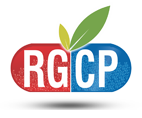Articles
Quality by Design (QbD) – An Essential Aspect of modern drug development
Quality
by design is an essential part of the modern approach to pharmaceutical
quality. Quality by Design (QbD) is a modern, scientific approach which helps
in finalizing drug design, alignment of troubleshooting and automates manual
testing. Quality by Design (QbD) approach helps in ensuring quality by
developing a thorough understanding of the compatibility of a finished product
to all of the components and processes involved in manufacturing.
Majority
of the quality issue can be efficiently analyzed by using Quality by Design
(QbD) approach. This technique provides insights upstream throughout the
development process.
QbD requires identification of
all critical formulation attributes and process parameters as well as
determining the extent to which any variation can impact the quality of the
finished product.
Basic
components of Quality by Design (QbD)
involve a)
Defining the Product Design Goal b)
Discovering
the Process Design Space. C) Understanding the Control Space. D). Targeting the
Operating Space.
Some of the important tool of QbD includes design of experiments (DOE), risk assessment and process analytical technology (PAT).
QbD development process involve following step:
- Targeting of product profile: describes the use, safety and efficacy of the product.
- Target product quality profile: for defining the quantitative aspects of clinical safety and efficacy during product development
- Knowledge of prior art: Helps in risk assessment to prioritize knowledge gaps for further investigation.
- Critical quality attributes: Design a formulation and identify the critical quality attributes of the final product that must be controlled to meet the target product quality profile. Design a manufacturing process to produce a final product having these critical quality attributes.
- Identification of critical process parameters and raw material attributes which can be used for controlling the critical material attributes of the final product.
- Establish a control strategy for the entire process that may include input material controls, process controls and monitors, design spaces around individual or multiple unit operations, and/or final product tests.
- Continually monitor and update the process to assure consistent quality.
Implementing QbD beginning at the development phase requires a dedicated, disciplined, and sustained commitment by an organizattion. Few major challenges related to QbD design includes insufficient understanding of the process and its benefits, organizational resistance to change, denial of the need, competing priorities and lack of resources and expertise.
FDA emphasis for the requirement of QbD design can be easily judged by frequent deficiency letters citing the lack of QbD. Pharmaceutical industries are frequently citing critical components of QbD such as Quality target product profile (QTPP), critical quality attributes (CQAs), critical material attributes of drug and excipients (CMAs) and critical process parameters (CPPs).
Quality by Design (QbD) approach can results in reduced development time and costs, more regulatory compliance and reduction in queries from regulatory agencies. This approach helps in the reduction of failures results during the shelf life of the product. Quality control testing of the product may results in failure due to non-compliance of specification or lack of robust manufacturing process.
References:-
1. ICH. Draft consensus guideline: pharmaceutical development annex to Q8. Available at:, http://www.ich.org/LOB/media/MEDIA4349.pdf (accessed 11/21/2007).
2. J. Woodcock. The concept of pharmaceutical quality. Am. Pharm. Rev.Nov/Dec 2004: pp. 1–3.
3. P. Ganzer, J. A. Materna, M. B. Mitchell, and L. K. Wall. Current thoughts on critical process parameters and API synthesis. Pharm. Technology.46–66 (2005), July.
4. M. Glodek, S. Liebowitz, R. McCarthy, et al. Process robustness: A PQRI white paper. Pharm. Eng.1–11 (2006), Nov/Dec
5. ISPE PQLI. Draft PQLI summary update report. http://www.ispe.org/cs/pqli_product_quality_lifeycle_implementation_/draft_pqli_summary_update_report (accessed 11/21/2007).
6. M. N. Nasr. Implementation of quality by design (QbD): status, challenges, and next steps. FDA Advisory Committee for Pharmaceutical Science. Available at: http://www.fda.gov/ohrms/dockets/ac/06/slides/2006-4241s1_6.ppt (accessed 11/21/2007).
7. L. X. Yu. Implementation of quality-by-design: OGD initiatives. FDA Advisory Committee for Pharmaceutical Science. Available at: http://www.fda.gov/ohrms/dockets/ac/06/slides/2006-4241s1_8.ppt (accessed 11/21/2007).
College Address
College At:- Near Sultanpur Bird Sanctuary,
Farrukhnagar, Distt.- Gurgaon, Haryana
Phone:- 9818511778
Email:- rgcpcollege@gmail.com
Head Office
A1/11, Prashant Vihar Rohini,
Near Pitampura Metro Station,Opposite Power House
New Delhi, India-110085



